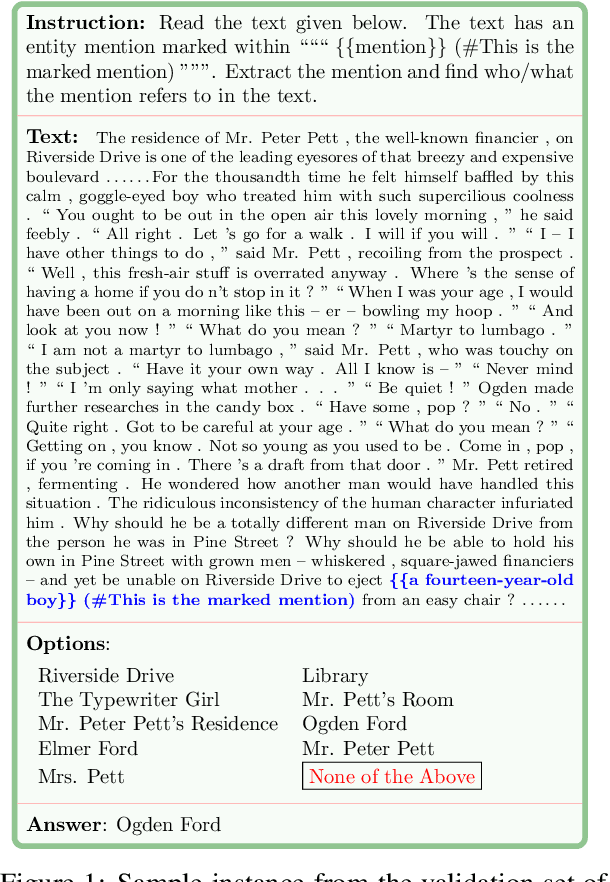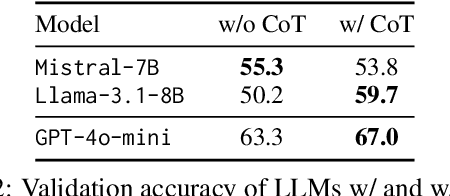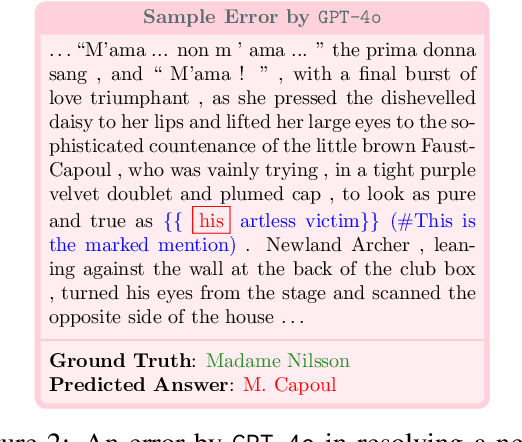Kawshik Manikantan
CVIT, IIIT Hyderabad
IdentifyMe: A Challenging Long-Context Mention Resolution Benchmark
Nov 12, 2024



Abstract:Recent evaluations of LLMs on coreference resolution have revealed that traditional output formats and evaluation metrics do not fully capture the models' referential understanding. To address this, we introduce IdentifyMe, a new benchmark for mention resolution presented in a multiple-choice question (MCQ) format, commonly used for evaluating LLMs. IdentifyMe features long narratives and employs heuristics to exclude easily identifiable mentions, creating a more challenging task. The benchmark also consists of a curated mixture of different mention types and corresponding entities, allowing for a fine-grained analysis of model performance. We evaluate both closed- and open source LLMs on IdentifyMe and observe a significant performance gap (20-30%) between the state-of-the-art sub-10B open models vs. closed ones. We observe that pronominal mentions, which have limited surface information, are typically much harder for models to resolve than nominal mentions. Additionally, we find that LLMs often confuse entities when their mentions overlap in nested structures. The highest-scoring model, GPT-4o, achieves 81.9% accuracy, highlighting the strong referential capabilities of state-of-the-art LLMs while also indicating room for further improvement.
Major Entity Identification: A Generalizable Alternative to Coreference Resolution
Jun 20, 2024Abstract:The limited generalization of coreference resolution (CR) models has been a major bottleneck in the task's broad application. Prior work has identified annotation differences, especially for mention detection, as one of the main reasons for the generalization gap and proposed using additional annotated target domain data. Rather than relying on this additional annotation, we propose an alternative formulation of the CR task, Major Entity Identification (MEI), where we: (a) assume the target entities to be specified in the input, and (b) limit the task to only the frequent entities. Through extensive experiments, we demonstrate that MEI models generalize well across domains on multiple datasets with supervised models and LLM-based few-shot prompting. Additionally, the MEI task fits the classification framework, which enables the use of classification-based metrics that are more robust than the current CR metrics. Finally, MEI is also of practical use as it allows a user to search for all mentions of a particular entity or a group of entities of interest.
 Add to Chrome
Add to Chrome Add to Firefox
Add to Firefox Add to Edge
Add to Edge